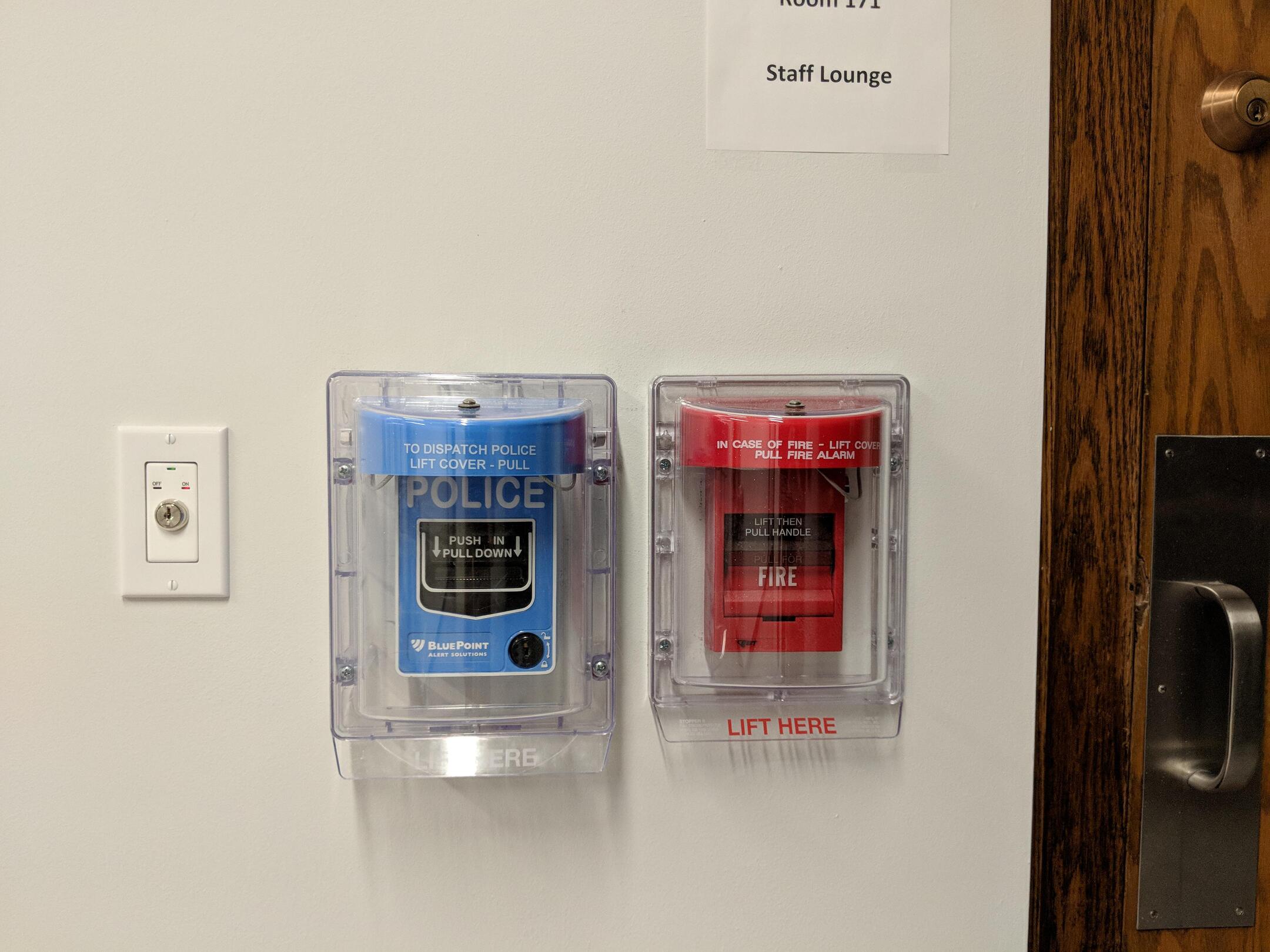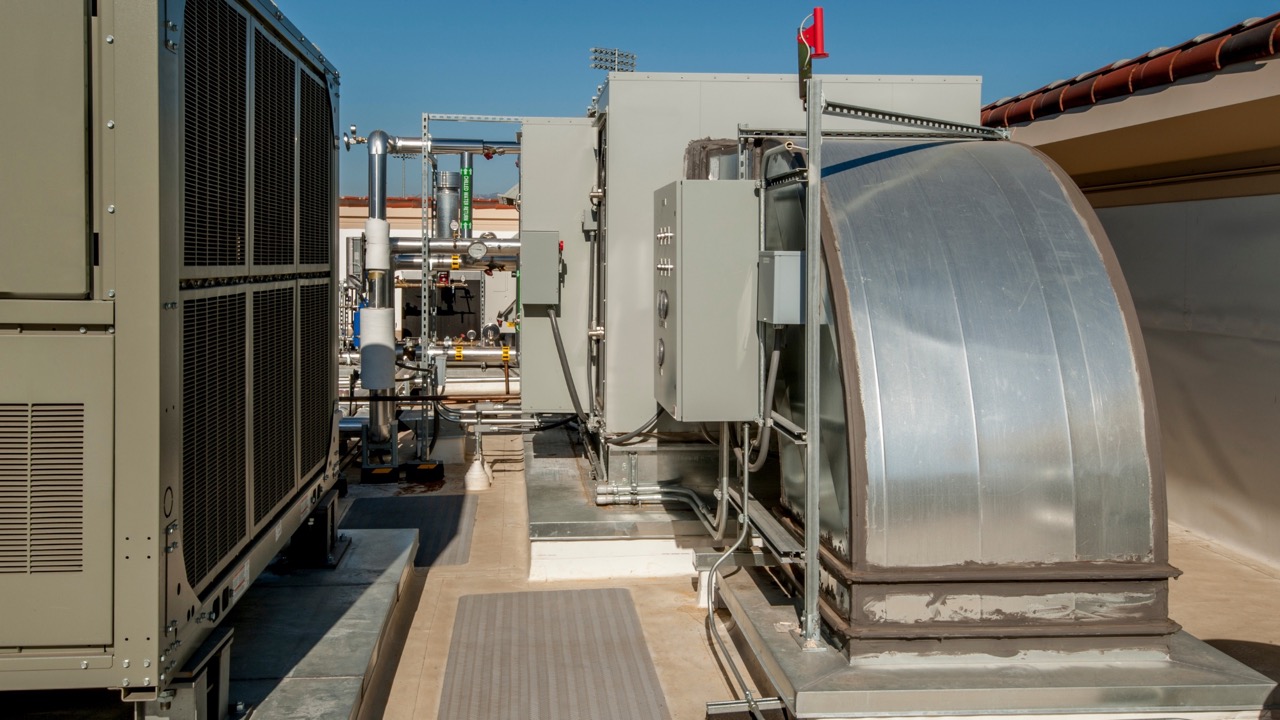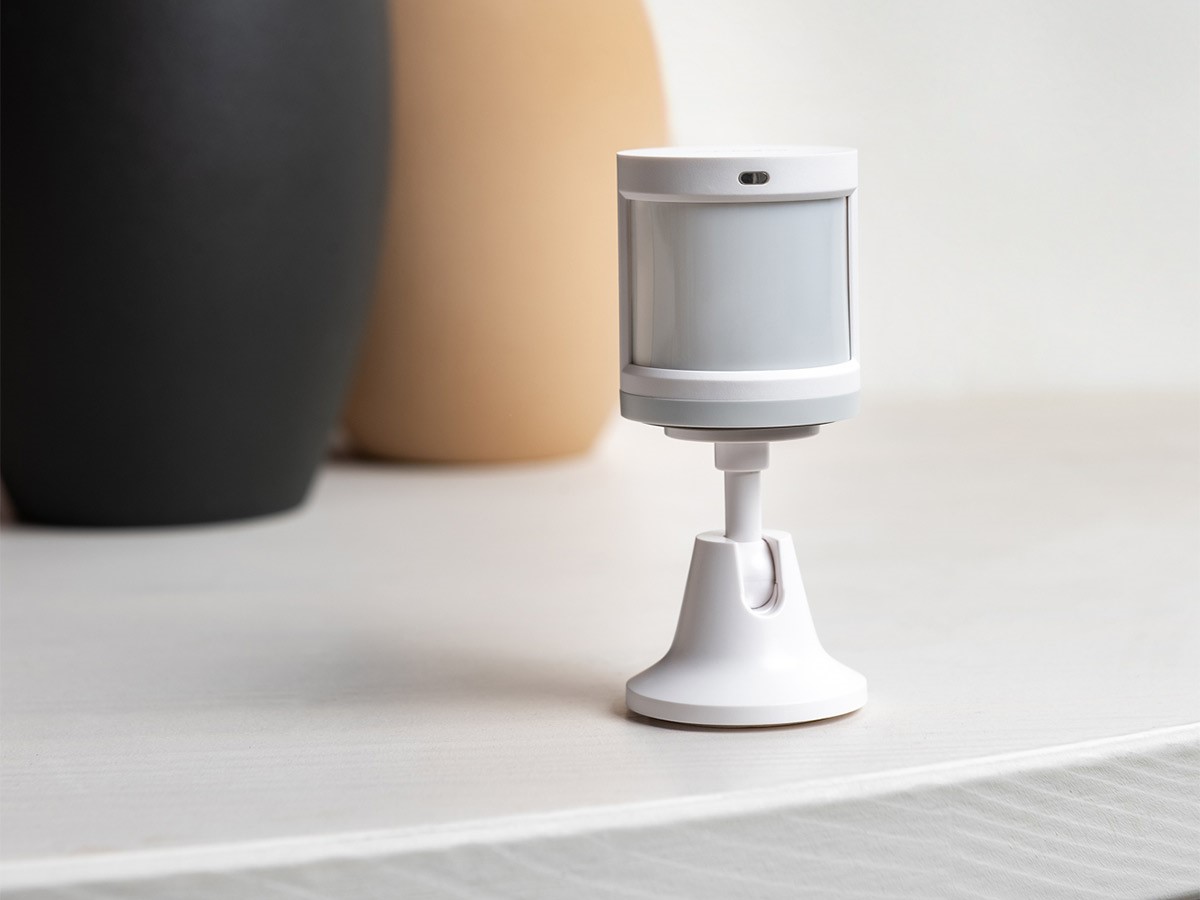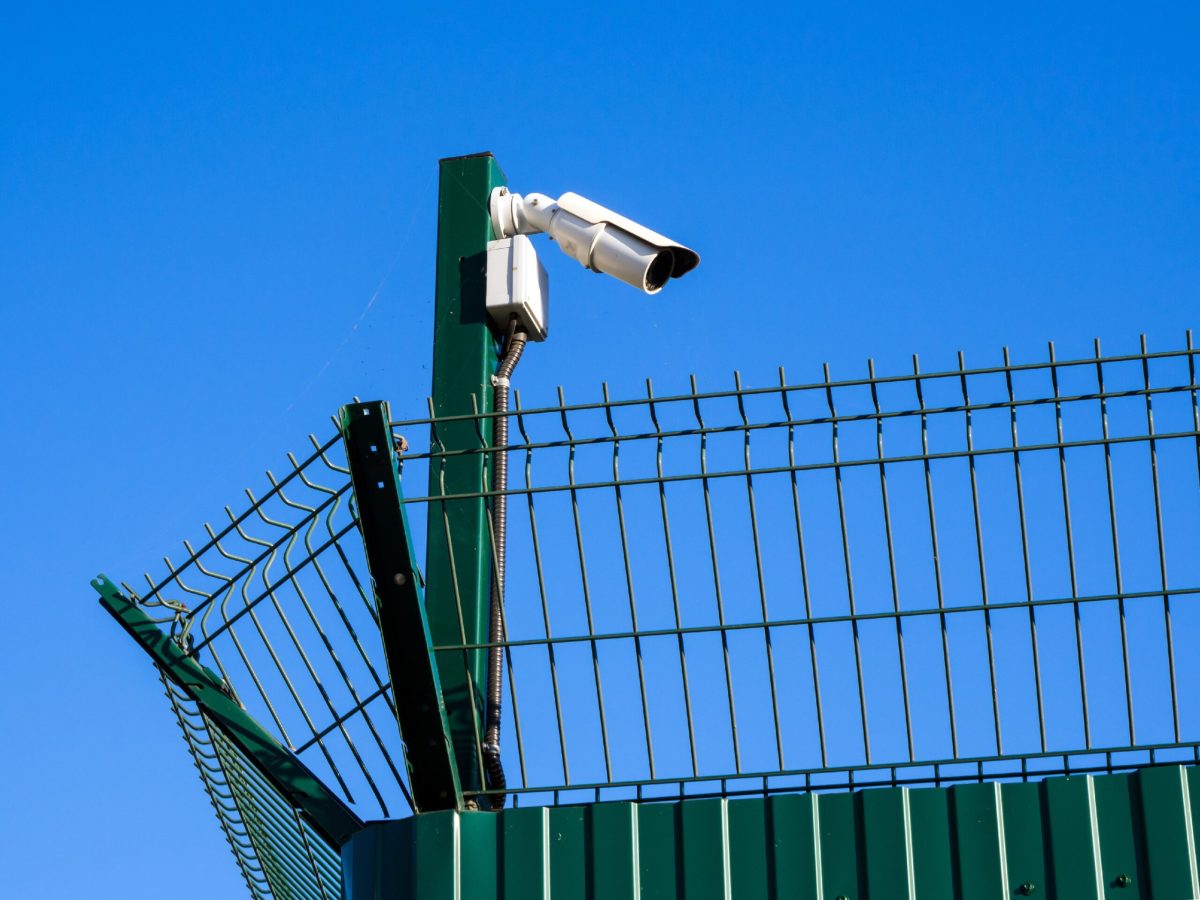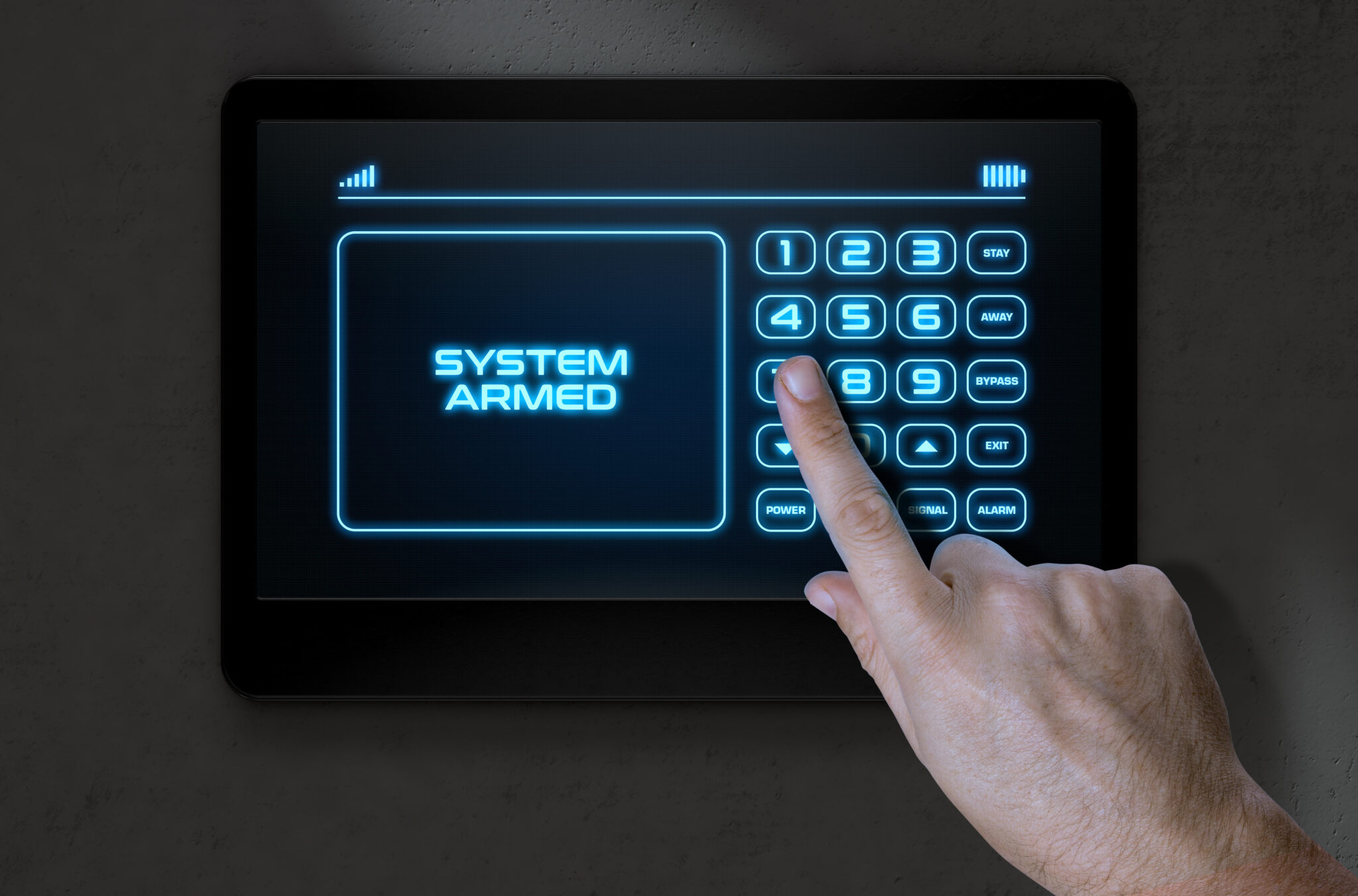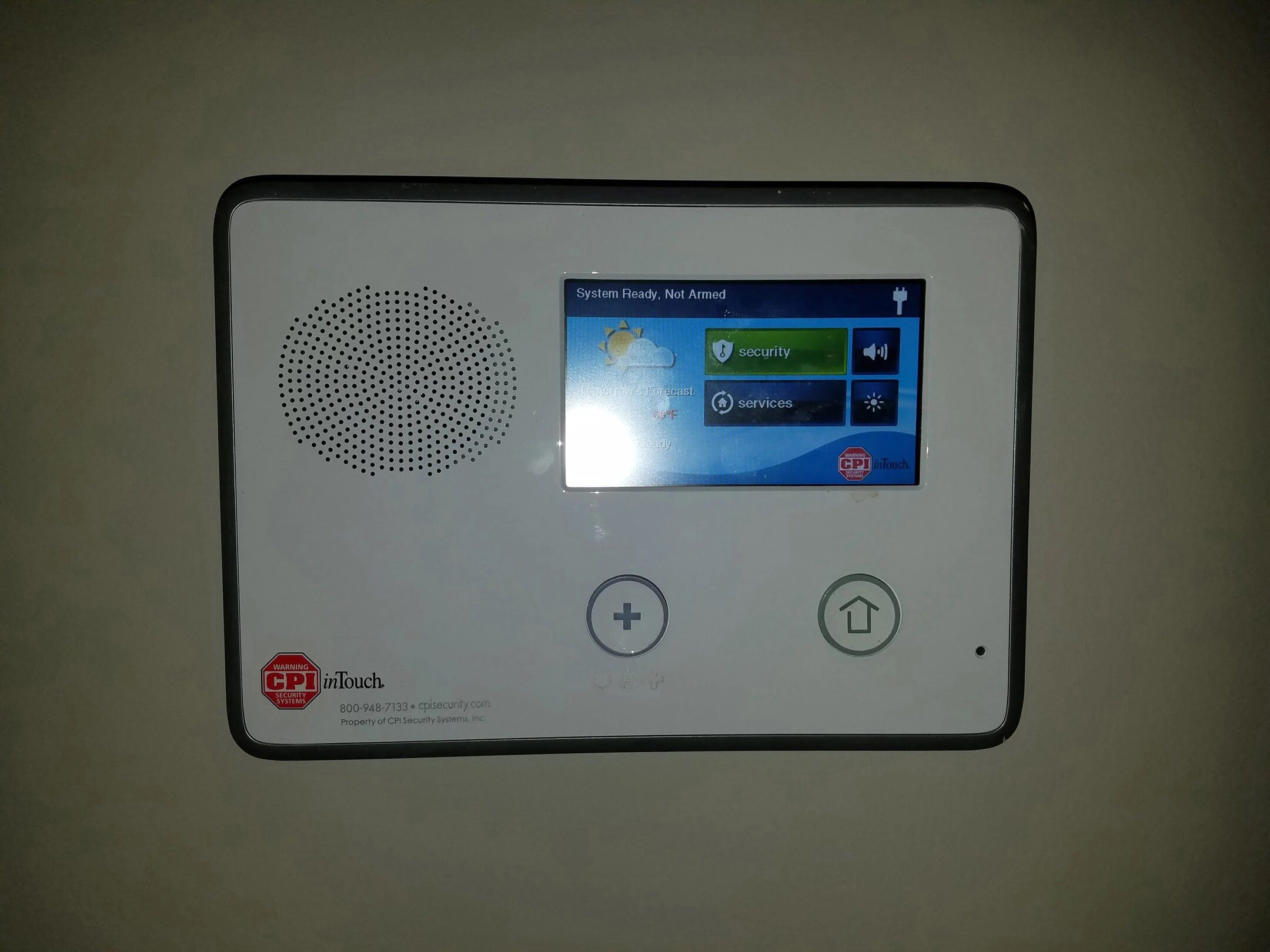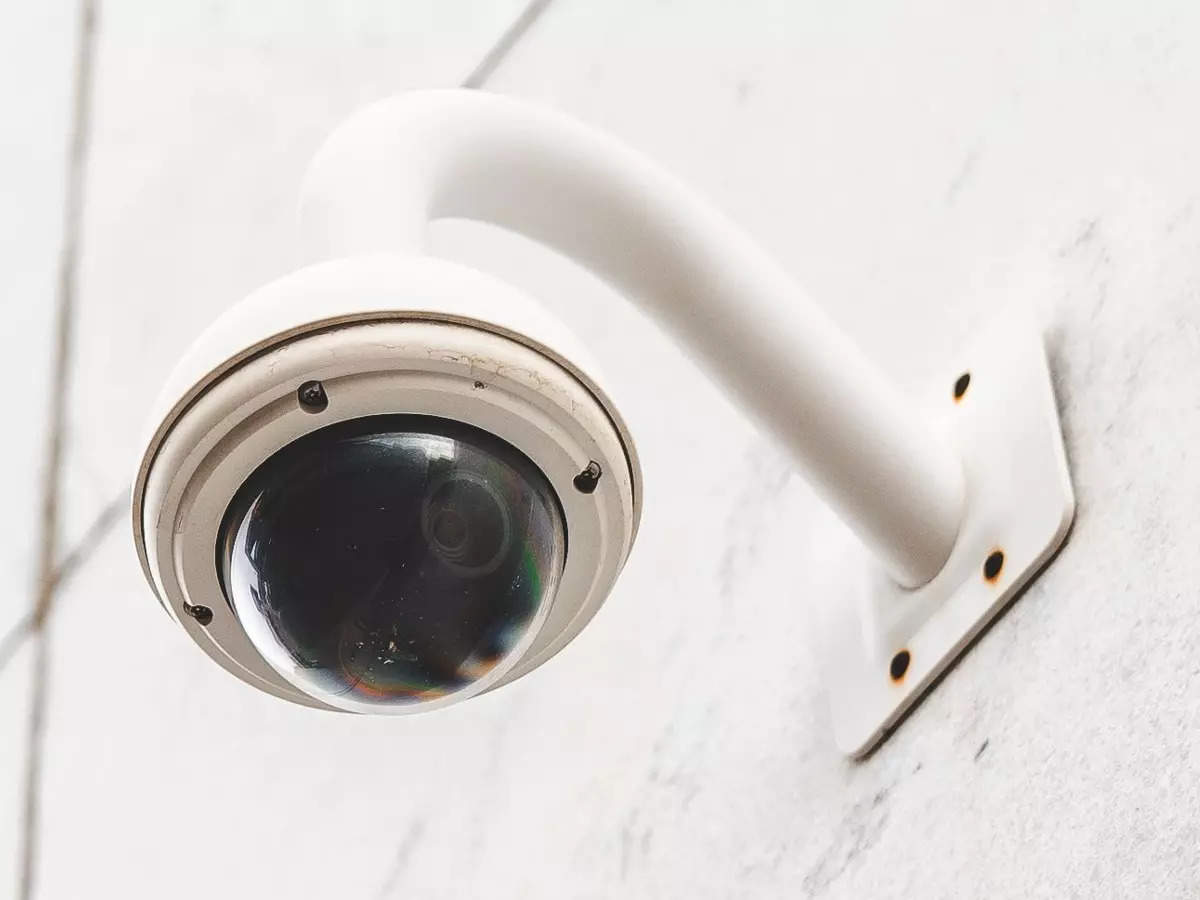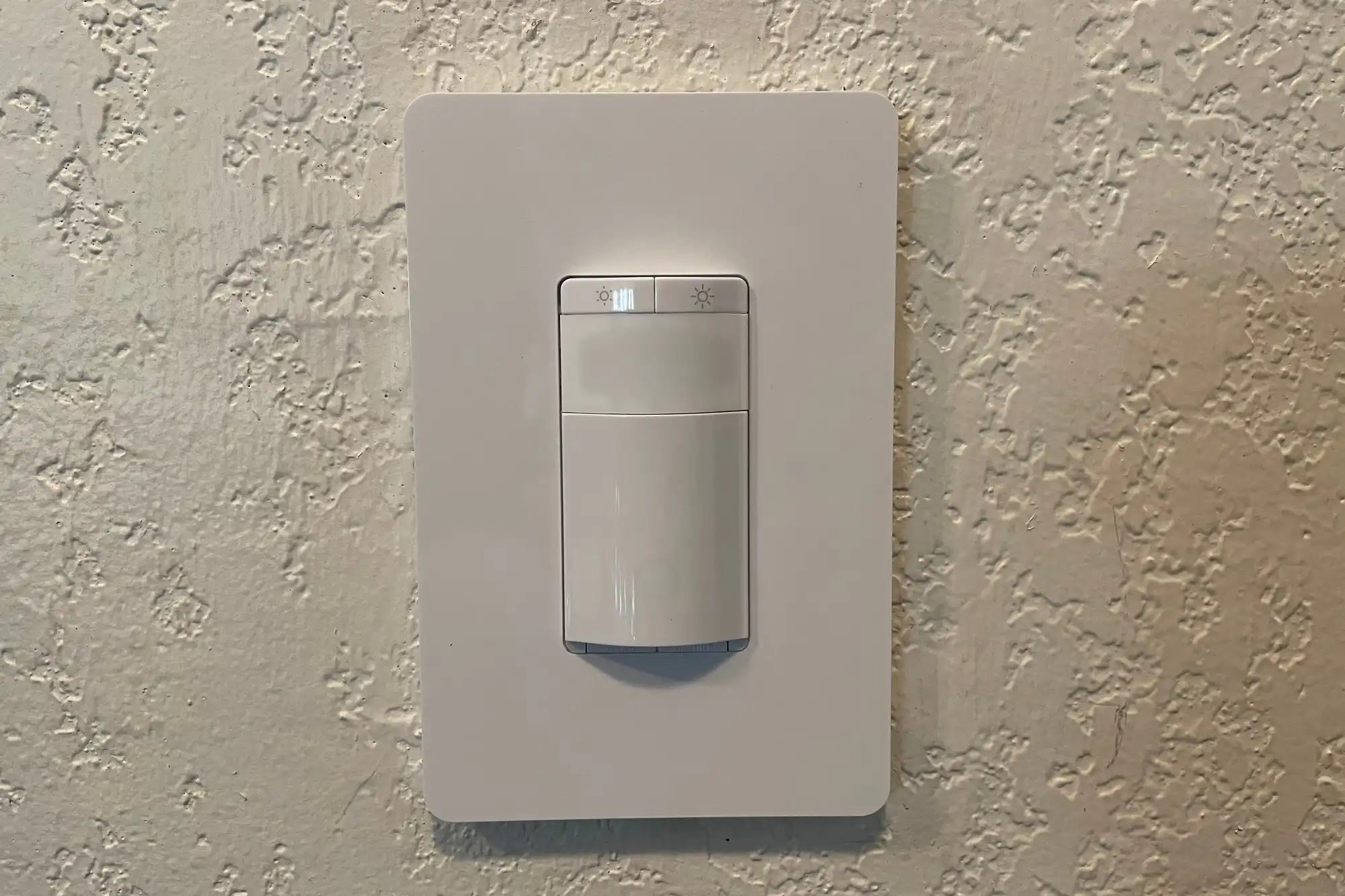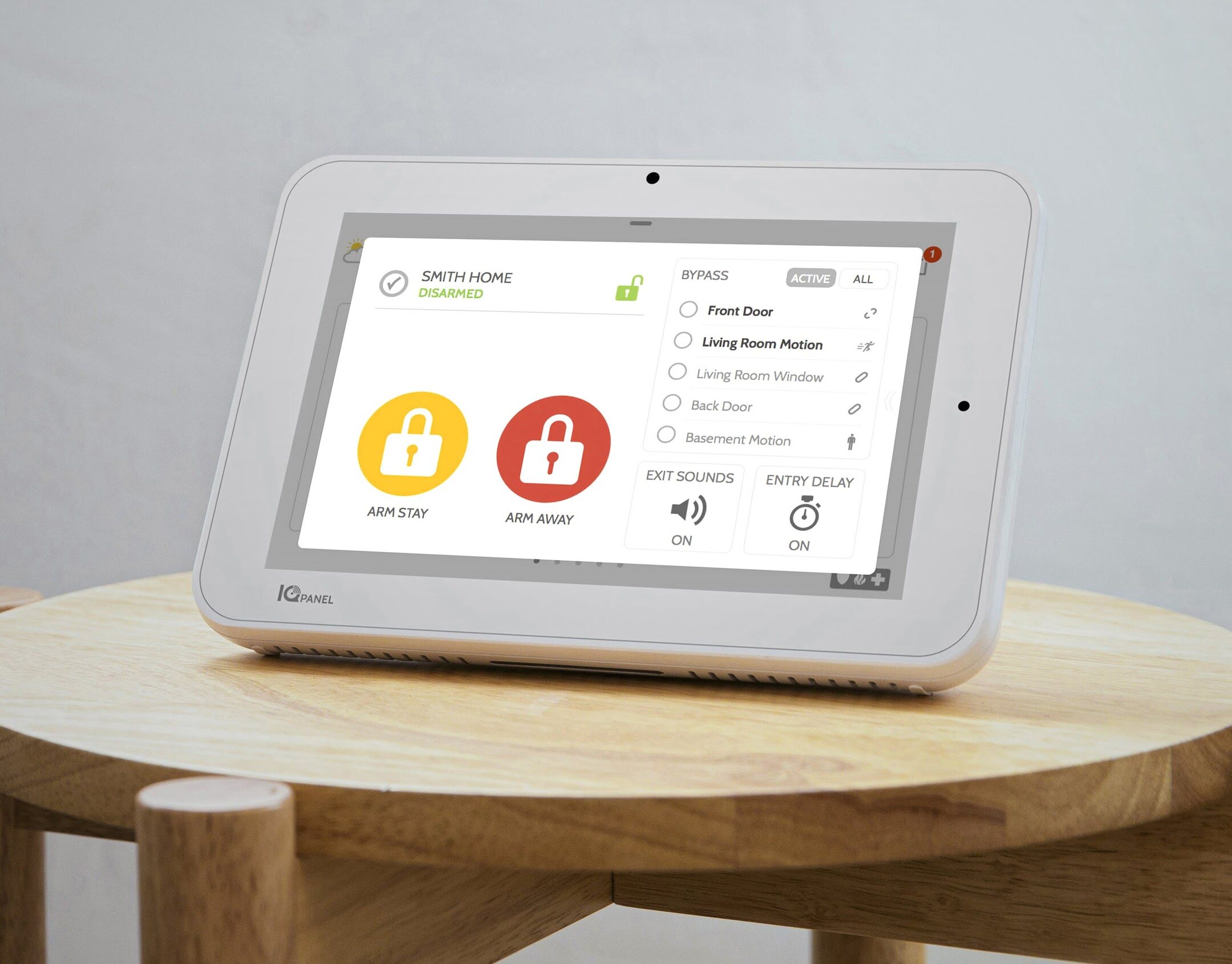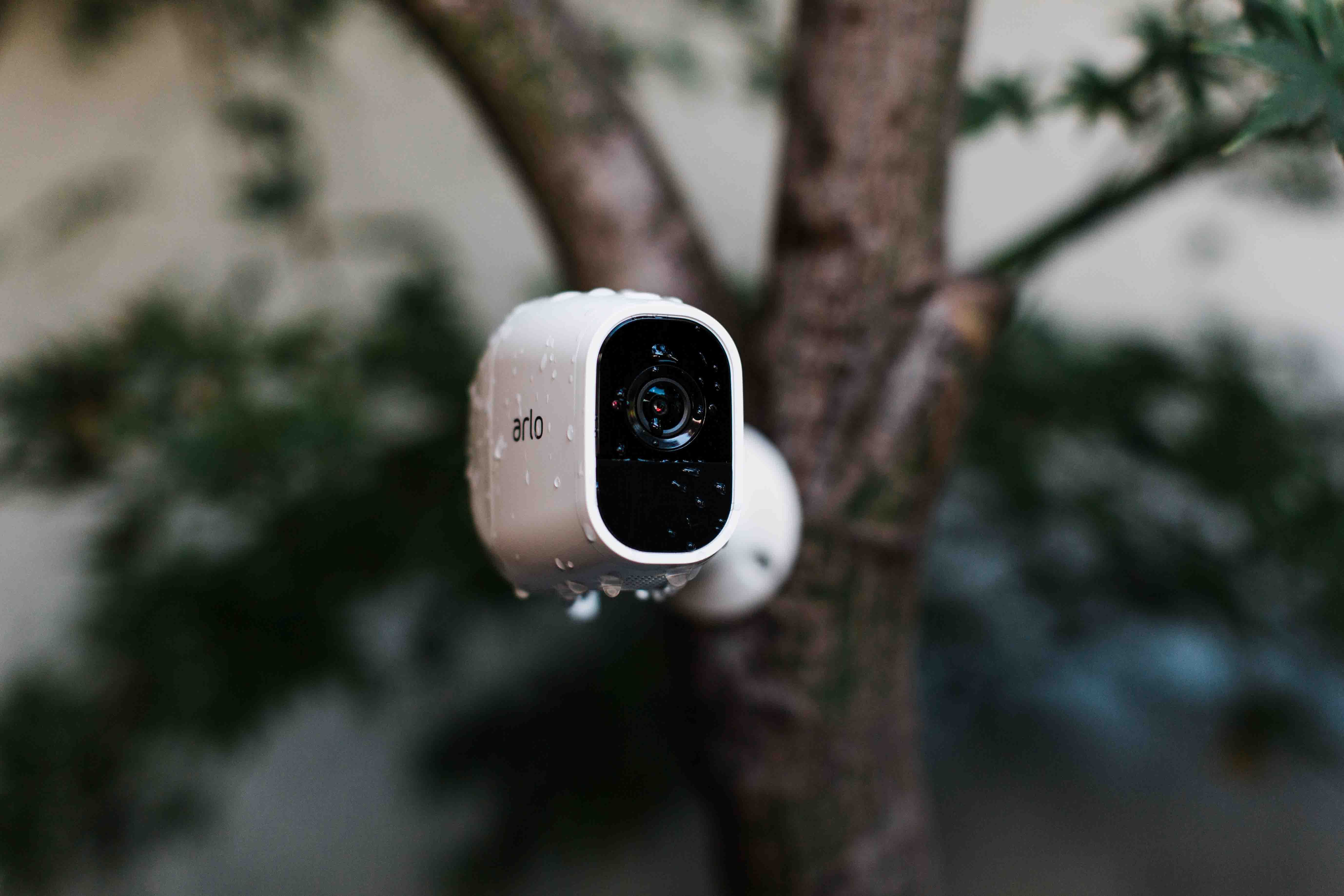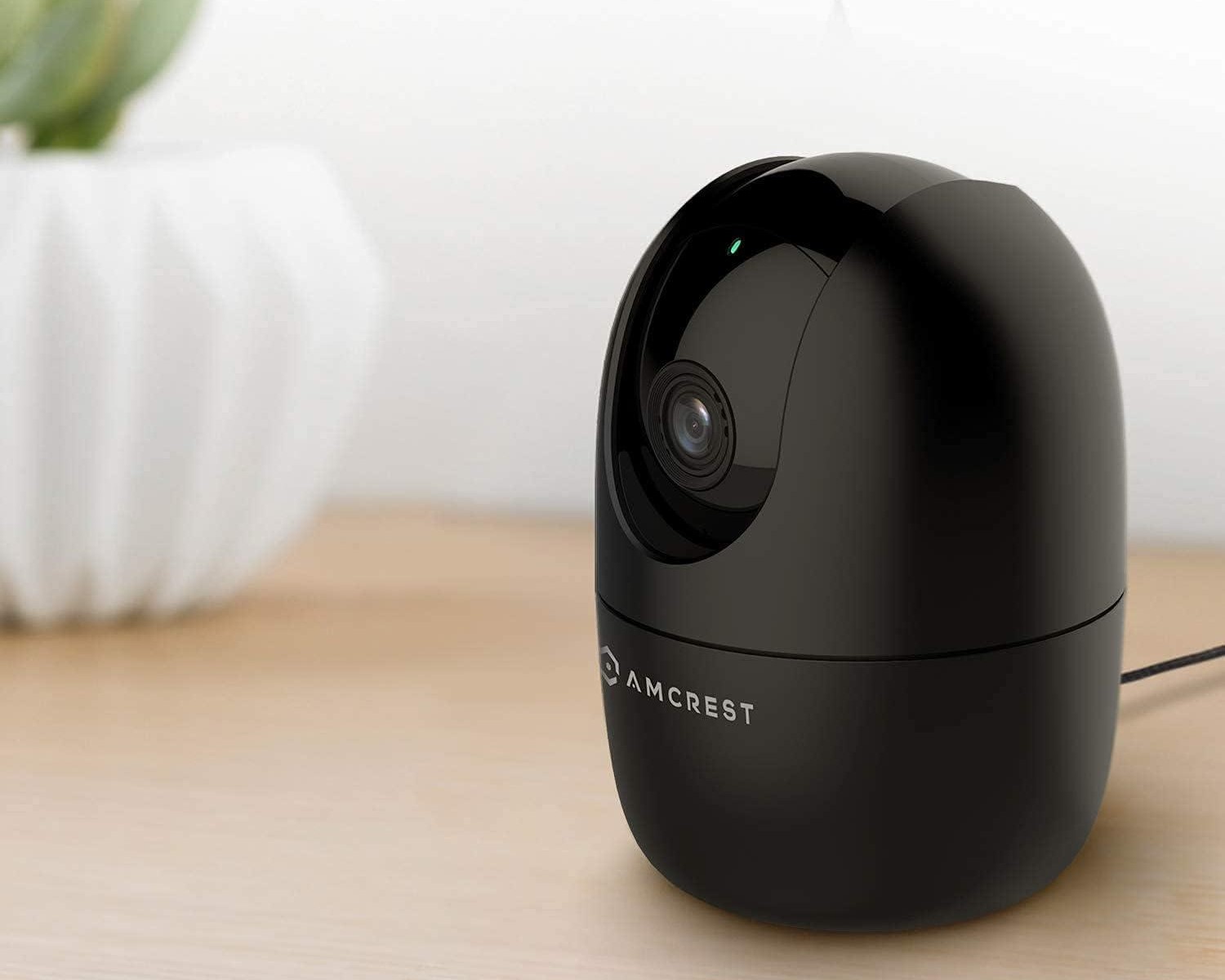Home>Home Security and Surveillance>How Do Motion Detection Alarm Systems Work
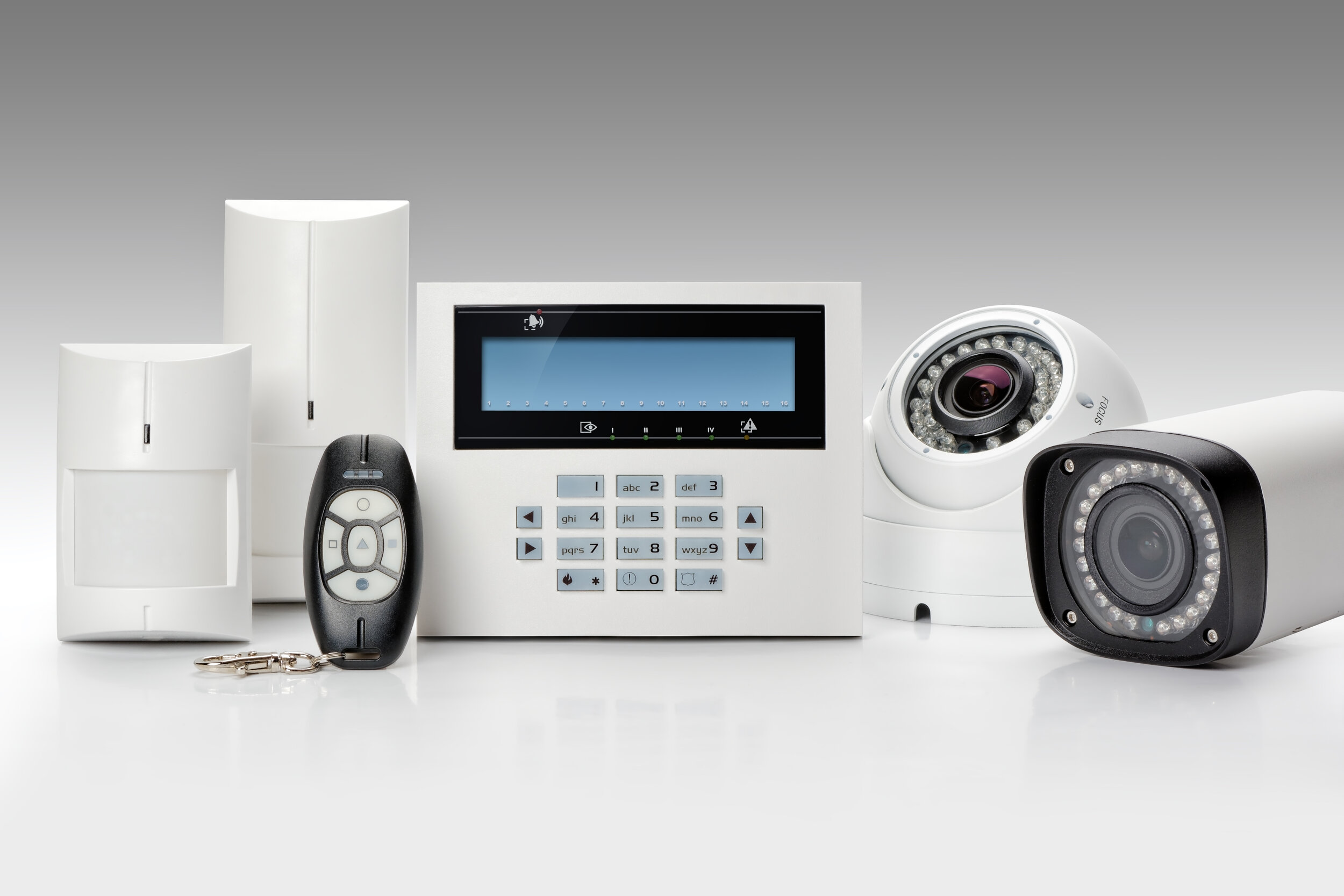

Home Security and Surveillance
How Do Motion Detection Alarm Systems Work
Modified: March 6, 2024
Learn how motion detection alarm systems work and enhance your home security and surveillance. Find out how these systems detect movement and trigger alarms to keep your property safe.
(Many of the links in this article redirect to a specific reviewed product. Your purchase of these products through affiliate links helps to generate commission for Storables.com, at no extra cost. Learn more)
Introduction
Welcome to the world of home security and surveillance. Whether you are a homeowner looking to protect your loved ones and belongings or a business owner concerned about the safety of your premises, having a reliable and efficient security system is of utmost importance. Among the various components of a comprehensive security system, motion detection alarm systems play a vital role in detecting and alerting you to any unauthorized movement or intrusion.
In this article, we will delve into the fascinating world of motion detection and explore how these alarm systems work to keep your premises secure. We will discuss the different types of motion sensors available, their mechanisms, and the advantages and limitations of using these systems.
Motion detection is a key feature in modern security systems that adds an extra layer of protection. By continually monitoring the surrounding areas, these systems can identify any changes in movement and promptly alert you to potential threats. Whether you are at home, at work, or away on vacation, motion detection alarm systems offer peace of mind by providing real-time information about any suspicious activity.
Understanding how motion detection works is crucial to optimizing its effectiveness. From the basic principles to advanced technologies, we will cover everything you need to know about motion detection alarm systems.
So, let’s dive in and explore the intricacies of motion detection, starting with the different types of motion sensors available in the market.
Key Takeaways:
- Motion detection alarm systems use sensors to detect movement and trigger alerts, providing early intrusion detection and customizable security settings for enhanced protection.
- Understanding the limitations of motion detection alarm systems, such as false alarms and potential blind spots, is crucial for optimizing their performance and reliability.
Read more: How Do Alarm Systems Work?
Understanding Motion Detection
Motion detection is the process by which a security system identifies and responds to the movement of objects within its monitored area. It is a fundamental aspect of home security and surveillance systems, as it allows for the detection and notification of any unauthorized or suspicious activity.
Motion sensors are designed to detect changes in the environment, specifically movement. These sensors are typically equipped with various technologies that enable them to sense and interpret motion accurately.
There are several factors to consider when it comes to understanding motion detection:
- Sensing Technologies: Different motion sensors utilize different technologies to detect motion. Common types of motion sensors include Passive Infrared (PIR) sensors, ultrasonic sensors, microwave sensors, and dual technology sensors.
- Detection Range: Motion sensors have a specific range within which they can detect movement. This range varies depending on the type of sensor and its intended purpose. Understanding the detection range is essential for positioning and optimizing the effectiveness of your motion detection alarm system.
- Triggering Mechanisms: When motion is detected, the sensor activates a triggering mechanism to initiate a response. This response can be an audible alarm, a message sent to your smartphone, or a signal to a central monitoring station.
- Sensitivity Adjustment: Motion sensors often come with sensitivity adjustment options. This allows you to fine-tune the sensor’s responsiveness to movement, reducing the chances of false alarms.
By understanding these fundamental aspects of motion detection, you can make informed decisions about the type of motion sensor to install and how to optimize its performance for your specific security needs.
In the next section, we will explore the different types of motion detection alarm systems available in the market and how each type operates.
Types of Motion Detection Alarm Systems
When it comes to motion detection alarm systems, there are several types of sensors available, each with its own unique set of features and mechanisms. Understanding these different types will help you choose the most suitable option for your specific security needs. Let’s take a closer look at some of the most common types of motion detection alarm systems:
- Passive Infrared (PIR) Motion Sensors: PIR sensors are widely used in home security systems. They detect changes in infrared radiation within their detection range. When an object or person enters the sensor’s range, it detects the heat emitted by the body and triggers an alarm or activates another security response.
- Ultrasonic Motion Sensors: Ultrasonic motion sensors emit high-frequency sound waves and detect any disruptions caused by moving objects. They work by measuring the time it takes for the sound waves to bounce back after hitting an object. If the time delay changes, indicating movement, the sensor triggers an alarm.
- Microwave Motion Sensors: Microwave motion sensors emit continuous microwaves and detect any changes in the reflected waves caused by moving objects. They are highly sensitive and can detect movement through walls and obstacles. However, they can be prone to false alarms caused by environmental factors such as heavy rain or strong winds.
- Dual Technology Motion Sensors: Dual technology motion sensors combine two or more sensing technologies, such as PIR and microwave, to reduce false alarms and enhance accuracy. These sensors require both technologies to trigger an alarm, minimizing the chances of false alarms caused by environmental factors alone.
Each type of motion sensor has its advantages and limitations, so it’s important to consider factors such as the environment, area to be monitored, and desired level of accuracy when choosing the right type for your motion detection alarm system.
Now that we have explored the different types of motion detection alarm systems, let’s dive into how these systems actually work to detect motion in their surrounding areas.
<
>Passive Infrared (PIR) Motion Sensors
Passive Infrared (PIR) motion sensors are one of the most commonly used types of motion sensors in home security systems. They rely on detecting infrared radiation emitted by objects within their field of view. By monitoring changes in heat patterns, PIR sensors can accurately detect the presence of a human or animal.
PIR sensors consist of two main components: a pyroelectric sensor and a Fresnel lens. The pyroelectric sensor is made of a thin crystal that generates an electric charge when exposed to infrared radiation. The Fresnel lens, on the other hand, is responsible for focusing the infrared energy onto the pyroelectric sensor.
When the PIR sensor is in its standby mode, it continuously monitors the surrounding environment for changes in infrared radiation. The sensor is designed to detect rapid changes in temperature, such as those caused by the movement of a person entering its detection range.
As someone enters the sensor’s field of view, their body heat emits infrared radiation to the surrounding objects. The sensor detects this change in infrared energy and triggers an alarm or activates another security response.
The detection range of PIR sensors can vary, typically ranging from a few feet to several meters. It’s important to position the sensor correctly to ensure optimal coverage of the desired area while minimizing false alarms caused by external factors such as moving foliage or pets.
One significant advantage of PIR sensors is their energy efficiency. They only become active when there is a change in infrared radiation, remaining in their low-power standby mode when no movement is detected. This feature helps to prolong battery life and reduce energy consumption.
However, PIR sensors do have some limitations. They are best suited for detecting the movement of warm-blooded creatures and may have difficulty detecting slower movements or objects that do not emit sufficient heat. Additionally, environmental factors such as extreme temperatures or direct sunlight can affect the accuracy of PIR sensors.
In summary, passive infrared (PIR) motion sensors are a popular choice for motion detection in home security systems. They are effective, energy-efficient, and relatively affordable. By understanding their capabilities and limitations, you can make informed decisions about incorporating PIR sensors into your security setup.
Ultrasonic Motion Sensors
Ultrasonic motion sensors are another commonly used type of motion sensor in home security systems. These sensors use high-frequency sound waves to detect movement within their monitored area. By emitting ultrasonic waves and analyzing the reflected waves, they can accurately identify changes in the environment.
The operation of ultrasonic motion sensors is based on the principle of echolocation, similar to how bats navigate their surroundings. The sensor emits ultrasonic waves at a frequency that is above the range of human hearing. These sound waves bounce off objects, creating echoes that are then detected by the sensor.
When there is no movement detected, the emitted ultrasonic waves return to the sensor in a predictable pattern. However, when an object or person enters the sensor’s detection range and causes a disruption in the sound waves, the sensor detects the change and triggers an alarm or activates another security response.
Ultrasonic motion sensors are known for their accuracy in detecting movement. They are sensitive to even the slightest changes in the environment and can detect movement through walls and other obstacles. This makes them suitable for securing areas with multiple entry points or complex layouts.
One advantage of ultrasonic motion sensors is their ability to cover a wide area. They have a broad detection range, typically spanning between 15 to 25 feet. Additionally, ultrasonic motion sensors are not affected by temperature changes or the presence of ambient light, making them more reliable in various environments.
However, there are some limitations to consider when using ultrasonic motion sensors. Ultrasonic waves can bounce off surfaces and cause false alarms if there are reflective or echoing surfaces in the vicinity. Additionally, ultrasonic motion sensors may struggle to detect motion in extreme temperature conditions, as the wave propagation may be affected.
In summary, ultrasonic motion sensors offer accurate and reliable detection of movement. They are ideal for securing large areas and can overcome obstacles that may hinder other types of motion sensors. By understanding their strengths and limitations, you can determine whether ultrasonic motion sensors are the right choice for your home security system.
Read more: How Do Fire Alarm Systems Work
Microwave Motion Sensors
Microwave motion sensors are a popular choice for motion detection in home security systems. These sensors use microwave technology to detect movement in their monitored area. By emitting continuous microwaves and analyzing the changes in the reflected waves, they can accurately identify any disturbances caused by moving objects.
The operation of microwave motion sensors is based on the Doppler Effect. The sensor emits microwave signals at a specific frequency and monitors the frequency of the reflected waves. When an object or person moves within the sensor’s detection range, their motion causes a change in the frequency of the reflected waves.
Microwave motion sensors are highly sensitive and can detect movement through walls and other solid surfaces. They offer a broad coverage area, typically ranging from 30 to 100 feet, making them suitable for securing large spaces.
One advantage of microwave motion sensors is their ability to penetrate various materials, such as glass, wood, and plastic. This makes them ideal for outdoor use or installations where the sensor needs to monitor multiple entry points.
However, microwave motion sensors do have some limitations. They can be more susceptible to false alarms caused by environmental factors such as heavy rain, strong wind, or moving vegetation. These sensors require careful positioning and adjustment to minimize false positives.
Another consideration when using microwave motion sensors is their power consumption. Due to their continuous microwave emission, these sensors tend to consume more energy compared to other types of motion sensors. Battery-powered options may require more frequent replacements or recharging.
In summary, microwave motion sensors offer reliable detection of movement and the ability to penetrate obstacles, making them suitable for a wide range of applications. By understanding their strengths and limitations, you can determine whether microwave motion sensors are the right choice for your home security system.
Dual Technology Motion Sensors
Dual technology motion sensors, also known as dual motion detectors, combine two or more sensing technologies to enhance the accuracy and reliability of motion detection in home security systems. By utilizing multiple technologies, these sensors can minimize false alarms and provide more robust detection capabilities.
The most common combination in dual technology motion sensors is the integration of passive infrared (PIR) and microwave technologies. By combining these two technologies, the sensor can take advantage of the strengths of each while compensating for their respective limitations.
The PIR component of the dual technology sensor detects changes in heat patterns, accurately detecting the presence of a human or animal. Meanwhile, the microwave component emits continuous microwaves and detects any disruptions caused by moving objects. Both technologies must be triggered simultaneously to indicate genuine motion and trigger an alarm.
The integration of PIR and microwave technologies in dual technology motion sensors offers several advantages. One of the key benefits is minimizing false alarms caused by environmental factors. PIR sensors can be influenced by sources of heat or moving vegetation, while microwave sensors can be affected by weather conditions or larger objects in the detection area. By requiring activation from both technologies, dual technology sensors reduce false positives and ensure more reliable detection.
Dual technology motion sensors also provide increased security for specific areas. For example, they are particularly effective in securing outdoor spaces where there may be a higher chance of false alarms due to wind or small animals. The combination of PIR and microwave technologies significantly enhances the accuracy and eliminates false alarms caused by individual sensors.
However, it’s important to consider the potential drawbacks of dual technology motion sensors. These sensors are generally more expensive than their single-technology counterparts. Additionally, the installation and configuration of dual technology sensors can be more complex due to the need for proper synchronization and adjustment of both technologies.
In summary, dual technology motion sensors offer a higher level of accuracy and reliability by combining multiple sensing technologies. They are ideal for areas prone to false alarms or environments with challenging conditions. By understanding their benefits and considerations, you can determine whether dual technology motion sensors are the right choice for your home security system.
Motion detection alarm systems work by using sensors to detect changes in the environment, such as movement or heat. When the sensor is triggered, it sends a signal to the alarm system to sound an alert. Regular maintenance and testing of the sensors is important to ensure the system is working properly.
How Motion Detection Alarm Systems Work
Motion detection alarm systems work by using sensors to monitor the surrounding area for any movement or changes in the environment. These systems employ different types of motion sensors, such as passive infrared (PIR), ultrasonic, microwave, or dual technology sensors, to detect and identify motion accurately.
When a motion sensor detects movement, it triggers a response, typically in the form of an alarm or an alert sent to a central monitoring station or your smartphone. The precise mechanism of how motion detection alarm systems work varies depending on the type of sensor and the specific system. However, there are some common principles that underlie their operation:
- Detection Zone and Range: Each motion sensor has a coverage area known as the detection zone. This zone defines the specific area in which the sensor can detect movement. The range of the sensor determines how far it can detect motion within that zone. Understanding and optimizing the detection zone and range is crucial for ensuring comprehensive coverage of the desired area.
- Activation and Alerting: When a motion sensor detects movement, it activates a triggering mechanism to initiate the desired response. This can be in the form of sounding an audible alarm, sending a notification to your smartphone or computer, or alerting a central monitoring station. The goal is to promptly notify you or the authorities of any potential security breach.
- False Alarms and Sensitivity Adjustment: Motion sensors are designed to be sensitive enough to detect even the smallest movements. However, this sensitivity can sometimes lead to false alarms triggered by harmless movements or environmental factors. To minimize false alarms, many motion detection alarm systems offer sensitivity adjustment options. You can fine-tune the sensor’s responsiveness to movement, reducing the chances of false alarms without compromising the system’s effectiveness.
Modern motion detection alarm systems often integrate with other security components, such as security cameras, door/window sensors, and home automation systems. This allows for a comprehensive and interconnected security network that provides enhanced protection and remote access to monitor and control your security system.
In summary, motion detection alarm systems rely on sensors to detect movement and trigger an appropriate response. By understanding the principles of motion detection and optimizing the system’s settings, you can create a reliable and effective security setup for your home or business.
Detection Zone and Range
The detection zone and range are key considerations when it comes to motion detection alarm systems. They determine the specific area in which the sensors can detect movement and how far they can effectively detect motion within that zone.
The detection zone is the coverage area in which the motion sensors are designed to monitor for any changes in movement. This zone can vary depending on the type of sensor used and the specific system. It is important to understand the range of the detection zone to ensure comprehensive coverage of the desired area.
The range of the motion sensors refers to the distance at which they can detect motion within the detection zone. This can range from a few feet for small-scale applications to several meters for larger areas. The range is typically adjustable to suit the specific security requirements of the premises.
When positioning the motion sensors, it is crucial to consider the range and placement to maximize their effectiveness. Placing sensors in strategic locations can ensure coverage of entry points and high-risk areas. In general, it is recommended to position sensors at a height of 6 to 8 feet, angled downwards for optimal detection.
Factors such as the environment and the type of sensor can affect the performance and range of detection. For example, PIR sensors are typically more effective at shorter ranges and are better suited for indoor applications. On the other hand, microwave sensors have a longer range and can penetrate obstacles, making them suitable for outdoor use or areas with larger coverage requirements.
It is also important to consider the potential limitations of the detection zone and range. Certain obstacles or conditions can hinder the effectiveness of motion detection. For example, large furniture, walls, or other physical barriers may obstruct the sensor’s view, reducing its range. Additionally, extreme weather conditions such as heavy rain or fog can affect the accuracy and range of detection.
By understanding the detection zone and range and considering environmental factors, you can optimize the placement and configuration of your motion sensors. This will help ensure comprehensive coverage, minimize blind spots, and improve the overall reliability of your motion detection alarm system.
Read more: How Do Burglar Alarm Sensors Work
Alerting and Activation
Alerting and activation are crucial components of motion detection alarm systems. When a motion sensor detects movement within its detection zone, it triggers a response to alert you or a monitoring service about the potential security breach. The alerting and activation process ensures that you are quickly notified of any unauthorized activity, allowing you to take appropriate action.
The specific alerting and activation mechanisms can vary depending on the type of motion detection alarm system and the configured settings. Here are some common methods used:
- Notification Alerts: Many modern motion detection alarm systems are integrated with smartphone applications or computer software. When motion is detected, the system sends an immediate notification to your device, providing real-time information about the event. These notifications can be in the form of text messages, push notifications, or emails, allowing you to stay informed even when you are away from home or the monitored premises.
- Audible Alarms: Motion detection alarm systems often include audible alarms that are activated when motion is detected. These alarms can alert you and other individuals on the premises about the potential security breach. Loud sirens or strobe lights can attract attention and deter intruders, while also notifying you of the situation.
- Central Monitoring Services: Some motion detection alarm systems can be connected to a central monitoring station. When motion is detected, the system sends a signal to the monitoring station, where trained professionals are available to respond. They can quickly assess the situation and dispatch appropriate authorities, such as police or security personnel, if necessary.
- Integration with Security Cameras: Motion detection alarm systems often work in conjunction with security cameras. When motion is detected, the system can trigger the recording of video footage, allowing you to review the event later and potentially identify the intruders. This integration enhances the overall security and provides valuable evidence in case of a security breach.
Configuring the alerting and activation settings of your motion detection alarm system is essential to ensure timely and effective responses. It is important to customize these settings based on your security preferences and the specific needs of your premises.
Additionally, it’s crucial to regularly test and maintain the alerting and activation components of your motion detection alarm system to ensure they are functioning properly in case of an actual security event. Regular testing helps identify any potential issues and allows you to address them promptly.
By implementing robust alerting and activation mechanisms, you can proactively respond to potential security threats and take appropriate measures to protect your home or business.
False Alarms and Sensitivity Adjustment
False alarms can be a common issue with motion detection alarm systems, and it is crucial to minimize them to ensure the effectiveness and reliability of the system. False alarms can be triggered by various factors, such as environmental conditions or unintended movement within the detection zone. Sensitivity adjustment is a vital feature that helps in reducing false alarms and optimizing the performance of the system.
Many motion detection alarm systems offer sensitivity adjustment options, allowing you to fine-tune the sensor’s responsiveness to movement. By adjusting the sensitivity, you can customize the system to respond only to significant motions and avoid false alarms caused by minor movements or environmental factors.
When adjusting the sensitivity, it is important to strike a balance between minimizing false alarms and maintaining the system’s ability to detect actual threats. Setting the sensitivity too low may result in missed detections, while setting it too high can lead to an increase in false alarms. It may take some experimentation and monitoring to determine the optimal sensitivity level for your specific security needs.
Additionally, consider the following factors when adjusting the sensitivity of your motion detection alarm system:
- Environmental Conditions: Environmental conditions, such as heavy rain, strong wind, or moving vegetation, can trigger false alarms. Adjusting the sensitivity can help mitigate the impact of such conditions on the system’s performance.
- Pets and Wildlife: If you have pets or wildlife in your home or surroundings, they can inadvertently trigger false alarms. Adjusting the sensitivity or using pet-proof motion sensors can prevent unnecessary alerts caused by these movements.
- Obstacles and Reflective Surfaces: Certain obstacles or reflective surfaces, such as hanging curtains or mirrors, can cause false alarms by interfering with the sensor’s detecting capabilities. Positioning the sensors carefully and avoiding direct beams on such surfaces can help minimize false alarms.
Regular maintenance and testing are essential to ensure the sensitivity adjustment remains accurate and effective. Perform periodic checks to ensure that the system is detecting desired motions while minimizing false alarms. Additionally, keep an eye out for any changes in the environment that may impact the system’s performance, such as new furniture placement or modifications in the surroundings.
By properly adjusting the sensitivity of your motion detection alarm system and considering environmental factors, you can greatly reduce false alarms and ensure that the system only alerts you to genuine security threats. This optimization enhances the overall reliability and effectiveness of your security setup.
Advantages of Motion Detection Alarm Systems
Motion detection alarm systems offer numerous advantages when it comes to enhancing the security of your home or business. These systems utilize advanced technology to detect and alert you to any unauthorized movement or intrusion. Let’s explore some of the key advantages of motion detection alarm systems:
- Early Intrusion Detection: One of the primary advantages of motion detection alarm systems is the early detection of potential intrusions. By promptly alerting you to any movement within the detection zone, these systems give you the opportunity to take immediate action, such as contacting authorities or activating other security measures, to prevent or minimize any damage or loss.
- 24/7 Monitoring Capability: Motion detection alarm systems provide round-the-clock monitoring of your premises. Regardless of the time of day or whether you are at home or away, these systems are always on guard, continuously scanning the environment for any movement. This constant monitoring offers peace of mind and ensures that your property is protected at all times.
- Customizable Security Settings: Motion detection alarm systems offer various customizable security settings to suit your specific needs. This includes adjusting the sensitivity of the sensors, setting up alerts and notifications, and integrating with other security components, such as cameras or access control systems. These customization options allow you to tailor the system to your preferences and create a security solution that fits your requirements.
- Deterrence and Prevention: The mere presence of motion detection alarm systems can act as a deterrent to potential intruders. The knowledge that their actions will trigger an alarm and alert authorities can discourage criminals from attempting a break-in. Motion detection systems also enable you to take preventive measures by detecting suspicious activity before it escalates into a security breach.
- Integration with Other Security Components: Motion detection alarm systems can be integrated with other security components, such as security cameras, door/window sensors, or smart home automation systems. This integration enhances the overall security infrastructure and provides a comprehensive approach to protecting your property. Real-time video monitoring and remote access capabilities add an extra layer of protection and convenience.
- Energy Efficiency: Many motion detection alarm systems are designed to be energy-efficient. The sensors only become active when there is a change in motion, conserving power when no movement is detected. This energy efficiency not only reduces costs but also extends the life of the system’s batteries.
Overall, motion detection alarm systems provide advanced and reliable security solutions. They offer early detection, round-the-clock monitoring, customizable settings, and integration with other security components to enhance the safety and protection of your property.
Limitations of Motion Detection Alarm Systems
While motion detection alarm systems offer many advantages, it is important to be aware of their limitations to ensure realistic expectations and effective utilization. Understanding these limitations can help you make informed decisions and optimize the performance of your security system. Let’s explore some of the key limitations of motion detection alarm systems:
- False Alarms: False alarms can occur due to various factors, such as environmental conditions or unintentional movements within the detection zone. Wind, moving vegetation, or even the movement of pets can trigger false alarms. Sensitivity adjustment and careful sensor placement can help mitigate this issue, but there is still a possibility of false alarms in certain situations.
- Blind Spots: Motion detection alarm systems have specific detection zones and ranges. There may be blind spots within these coverage areas, obstructed by furniture, walls, or other physical barriers. It is crucial to strategically position the sensors to minimize blind spots and ensure comprehensive coverage of the desired areas.
- Limitations of Sensor Technology: Different types of motion sensors have their own limitations. For example, passive infrared (PIR) sensors may have difficulty detecting slow or subtle movements, while microwave sensors can be affected by weather conditions. Understanding the capabilities and limitations of each sensor type is essential for selecting the most appropriate option for your specific security needs.
- Potential Interference: Certain environmental factors can interfere with the performance of motion detection alarm systems. For example, direct sunlight, extreme temperatures, or reflective surfaces may affect the accuracy and reliability of the sensors. It is important to consider and address these potential sources of interference during the installation and configuration of the system.
- Installation and Maintenance: Proper installation and regular maintenance are crucial for the optimal performance of motion detection alarm systems. Careful positioning, alignment, and calibration of the sensors are necessary to maximize their effectiveness. Additionally, periodic checks, battery replacements, and firmware updates are important to ensure that the system functions reliably over time.
- Limitations in Extreme Conditions: Motion detection alarm systems may have limitations in extreme environmental conditions. For example, heavy rain, snow, or fog can affect the accuracy of the sensors or trigger false alarms. Similarly, extremely low or high temperatures can impact the performance of the system. It is important to consider these limitations if you live in an area with extreme weather conditions.
By understanding the limitations of motion detection alarm systems and taking appropriate measures to address them, you can optimize the performance and reliability of your security system. Regular monitoring, maintenance, and sensitivity adjustments can help mitigate false alarms and ensure effective protection for your property.
Read more: How Do I Turn Off Alexa Motion Detection
Conclusion
Motion detection alarm systems are powerful tools that provide an extra layer of security for your home or business. By utilizing advanced motion sensing technology, these systems can effectively detect and alert you to any unauthorized movement or intrusion. Understanding how these systems work and their advantages and limitations is essential for optimizing their performance and enhancing your overall security measures.
From passive infrared (PIR) sensors to ultrasonic, microwave, and dual technology sensors, motion detection alarm systems offer a range of options to suit different security needs. Each type of sensor has its own strengths and limitations, so it’s important to choose the one that best fits your specific requirements.
The advantages of motion detection alarm systems are numerous. They provide early intrusion detection, round-the-clock monitoring, customizable security settings, and integration with other security components. Motion detection systems act as a deterrent, enhance prevention efforts, and provide peace of mind knowing that your premises are constantly monitored.
However, it is important to be aware of the limitations of these systems as well. False alarms, potential blind spots, limitations of sensor technology, environmental conditions, and the need for proper installation and maintenance are factors to consider when implementing motion detection alarm systems.
In conclusion, motion detection alarm systems play a significant role in home security and surveillance. They offer enhanced protection, alerting you to any suspicious activity within the detection zone. By understanding the capabilities and limitations, customizing the settings, and properly maintaining the system, you can ensure effective and reliable security for your property.
Remember to regularly test and evaluate your system to ensure it is functioning properly and remains up to date with the latest advancements in motion detection technology. With the right combination of motion detection alarm systems and other security measures, you can create a comprehensive security setup that brings peace of mind and keeps your property safe.
Frequently Asked Questions about How Do Motion Detection Alarm Systems Work
Was this page helpful?
At Storables.com, we guarantee accurate and reliable information. Our content, validated by Expert Board Contributors, is crafted following stringent Editorial Policies. We're committed to providing you with well-researched, expert-backed insights for all your informational needs.
